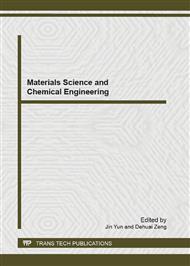p.398
p.403
p.409
p.413
p.422
p.426
p.432
p.436
p.440
The Effect of Ternary Material (Zr, Y, and O) High-k Gate Dielectrics
Abstract:
In this research, the Y2O3 layer is doped with the zirconium through co-sputtering and rapid thermal annealing (RTA) at 550°C, 700°C, and 850°C. Then the Al electrode is deposited to generate two kinds of structures, Al/ZrN/ Y2O3/ Y2O3+Zr/p-Si and Al/ZrN/ Y2O3+Zr/ Y2O3/p-Si. According to the XRD results, when Zr was doped on the upper layer, the crystallization phenomenon was more significant than Zr was at the bottom layer, meaning that Zr may influence the diffusion of the oxygen. The AFM also shows that the surface roughness of Zr has worse performance. For the electrical property, the influence to overall leakage current is increased because the equivalent oxide thickness (EOT) is thinner.
Info:
Periodical:
Pages:
422-425
Citation:
Online since:
May 2013
Keywords:
Price:
Сopyright:
© 2013 Trans Tech Publications Ltd. All Rights Reserved
Share:
Citation:


